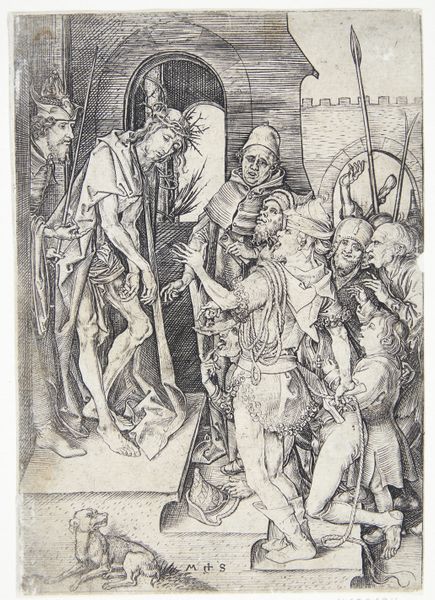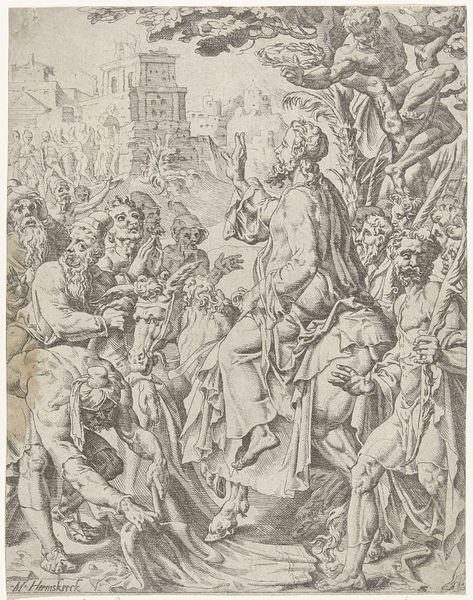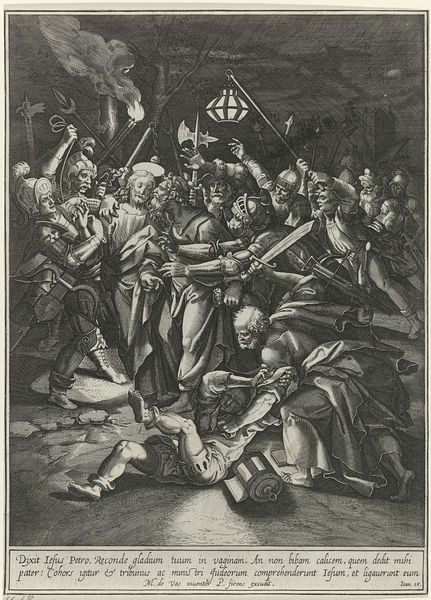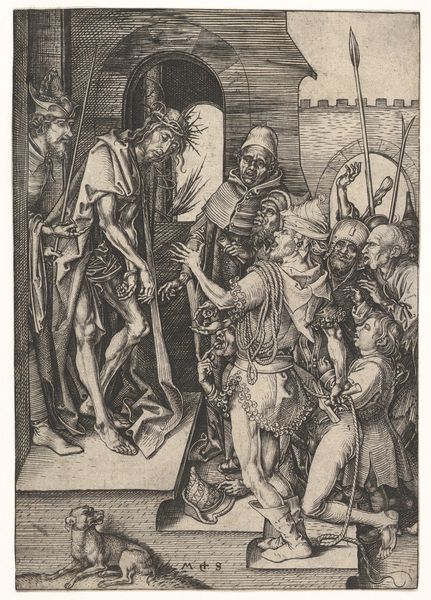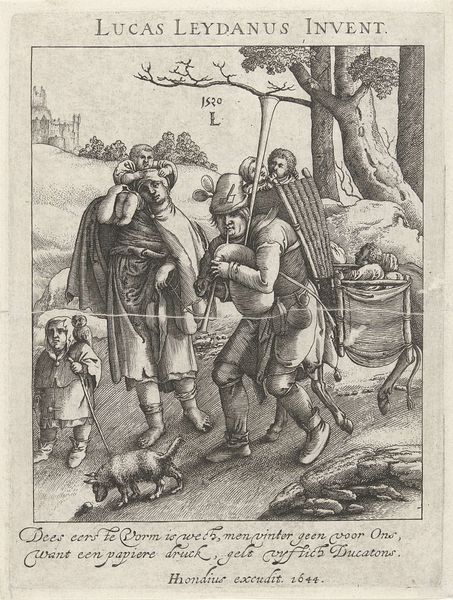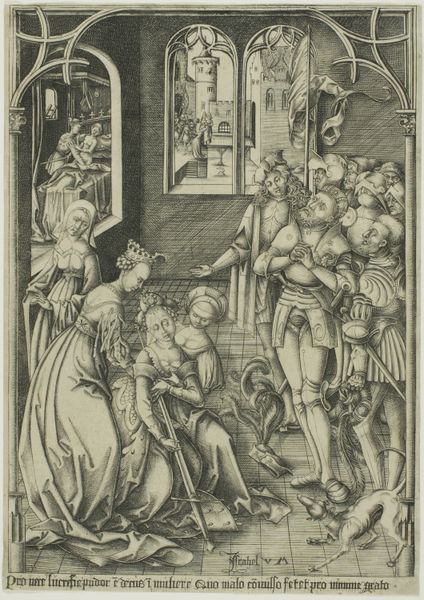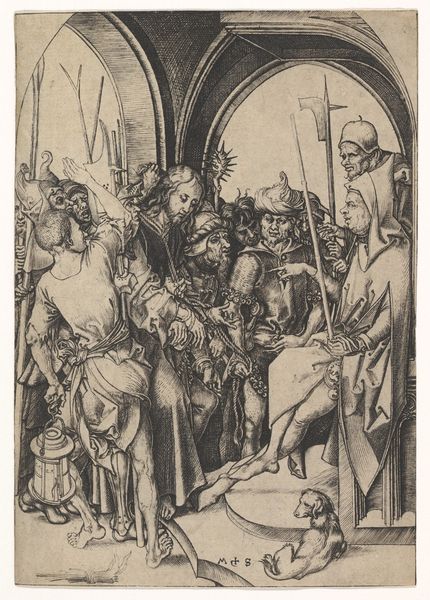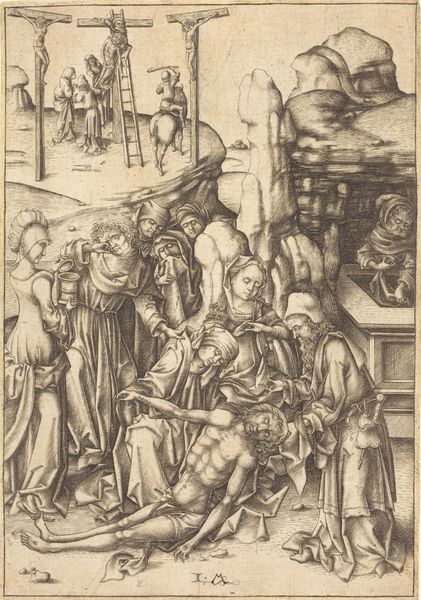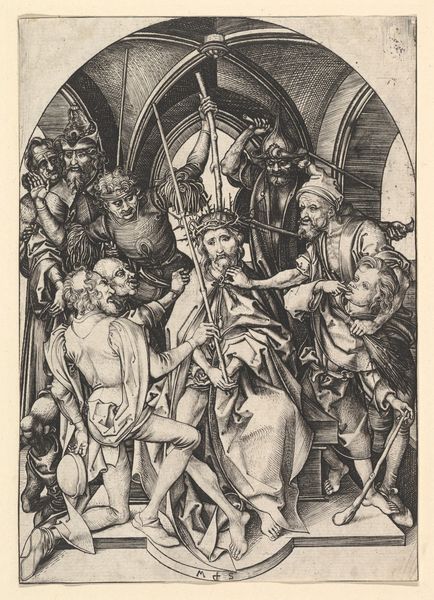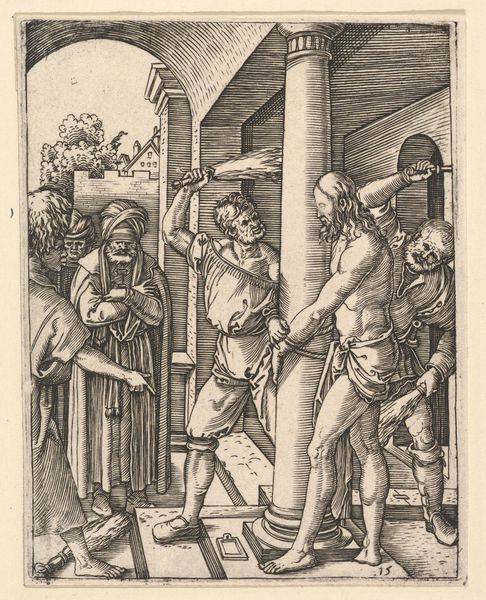
painting, oil-paint
#
portrait
#
narrative-art
#
painting
#
oil-paint
#
figuration
#
oil painting
#
history-painting
#
northern-renaissance
#
portrait art
Copyright: Public domain
Jan Joest painted 'The Kiss of Judas' around 1505-1508, most likely using oil paints on a wooden panel. The smooth surface and luminous colors result from the oil paint, built up in thin layers. This allows for a high level of detail, as you can see in the textures of the clothing, the metal of the armor, and the expressions on the faces. The artist’s skilled handling of the oil medium lends the scene a sense of drama, as if we are witnessing this biblical event unfold before our very eyes. In the late medieval period, oil painting was associated with wealth and status, as the materials were costly and the technique time-consuming. The high level of finish would have been a reflection of the patron's own status, someone keen to show their sophistication, wealth, and taste. 'The Kiss of Judas' demonstrates how materials and making are deeply connected to social context, reflecting the values and aspirations of the society in which it was created.
Comments
No comments
Be the first to comment and join the conversation on the ultimate creative platform.
